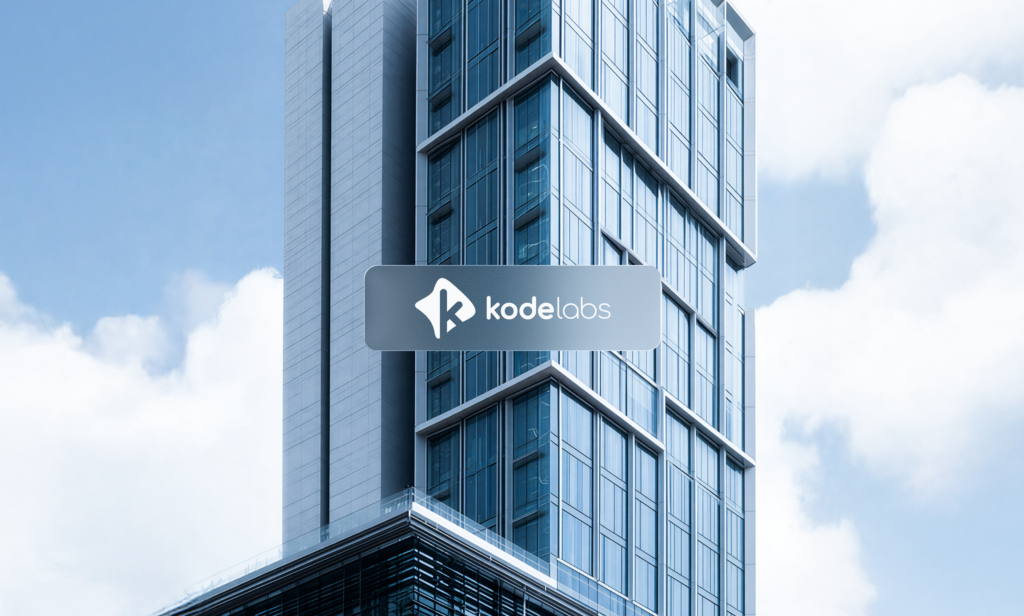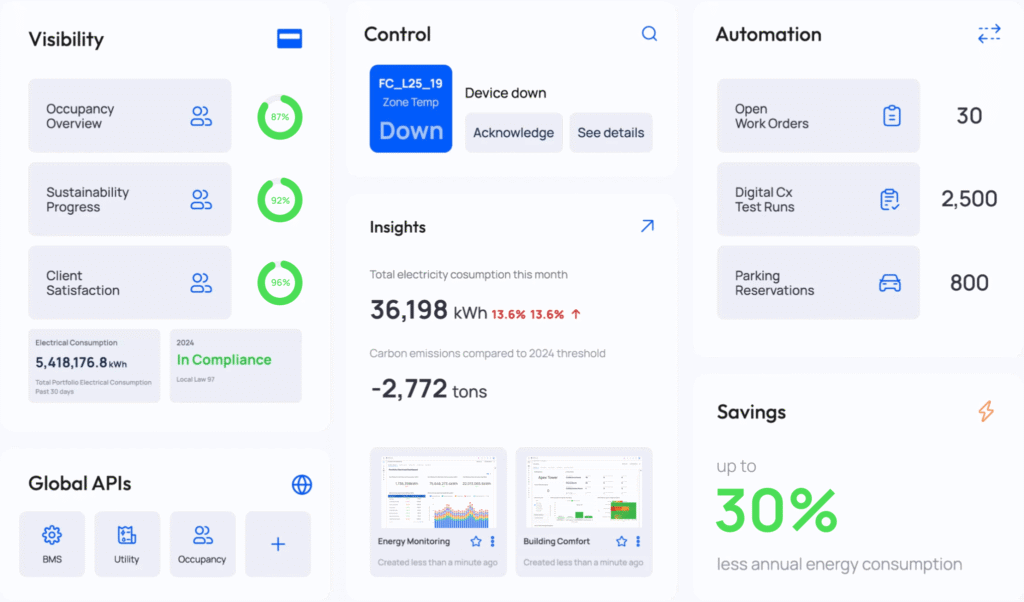By KODE Team
On this page
Sign up to our newsletter
Subscribe to receive the latest blog posts to your inbox every week.
By subscribing you agree to with our Privacy Policy.
Mission: Take back control of your stores, systems, and spending
The Retail Operations and Maintenance Status Quo: A Mission Impossible
Today’s retail operations and maintenance (O&M) teams are stretched thin. They’re expected to manage hundreds or even thousands of locations, ensuring systems run smoothly, comfort is maintained, energy use is optimized, and compliance is met, all while keeping costs down.
But here’s the reality:
- Energy inefficiencies go undetected. Spikes in energy use often go unnoticed until the utility bill arrives.
- Reactive maintenance is still the norm. Without the right tools, most teams can only address issues once something fails.
- Hidden equipment conflicts drive up costs. Systems may be working… but against each other, like heating and cooling simultaneously.
- Manual overrides and system adjustments are invisible. Teams make changes to fix an immediate issue, but those changes often stick around longer than intended with costly implications.
Traditional O&M models are fragmented, slow, and costly. But there’s a smarter way: one powered by data, automation, and visibility. With the right platform, what once felt like “mission impossible” becomes mission accomplished.
Why Traditional Retail O&M Models Fall Short
Most retailers operate under a centralized administration hub model, where a remote team oversees the maintenance requests of multiple locations. Here’s how issues are typically handled:
- Store managers report maintenance issues and reports them by phone or email
- An admin evaluates the severity and decides:
- Do we dispatch a technician?
- Should it be escalated to facilities?
- Can we override a setting remotely?
This outdated, fully reactive model leads to:
- Slow response times and increased downtime.
- Uncontrolled energy waste that can go unnoticed for months.
- High operational costs due to unnecessary truck rolls and an inefficient process.
Mission Control: A Smarter Way to Manage Retail Operations
KODE OS is a smart building operating system that transforms retail facility operations and management through real-time data, automation, and actionable insights.
We launched the Mission: Control series to spotlight the most common (and costly) challenges retail O&M teams face today. Each episode breaks down a specific pain point and shows how KODE OS helps teams take their troubleshooting from Mission Impossible to Mission Control.
Ep 1: The Energy Anomaly
Mission: Identify and eliminate energy outliers before they drain profits
The problem: Retailers oversee massive portfolios, each with its own energy use patterns. But detecting anomalies is far more complex than scanning utility bills.
Why it’s difficult:
- Disjointed energy data: Many retailers have energy management systems that don’t integrate with HVAC controls or other systems, making it nearly impossible to connect excessive energy use to a specific equipment behavior.
- No centralized monitoring: Some retailers don’t have an energy management system at all, relying instead on quarterly, manual energy audits, meaning problems can go unnoticed for months.
- Lack of real-time visibility: Even when spikes in energy consumption are detected, retailers struggle to pinpoint the exact cause, leading to slow response times and increased costs.
The solution: KODE OS ties in energy, HVAC, and utility data, providing retailers with a clear, real-time view of where, why, and how energy is being wasted.
✅ML-Powered Energy Benchmarking
- The Energy Operations Dashboard uses a machine learning model to study historical consumption patterns across all stores.
- It calculates expected energy use for each location and compares it to actual usage in real time, automatically flagging anomalies.
✅Instant Store Ranking & Issue Prioritization
- KODE OS ranks and sorts stores by highest energy consumption, making it easy for teams to identify problem locations first.
- Instead of manually sifting through reports, retailers get a clear, prioritized list of stores that need attention.
✅Escalate Issues Before They Become Costly Problems
- When an outlier is detected, KODE OS pinpoints the root cause, whether it’s an HVAC misconfiguration, overridden schedules, or equipment failure.
- Teams can act immediately to resolve issues, rather than wait for quarterly reports or high utility bills to reveal the problem.
Ep 2: The Reactive Response Dilemma
Mission: Shift from crisis-mode maintenance to proactive performance monitoring
The problem: In retail operations, seasonal transitions are a known challenge — but what often goes unnoticed is the invisible equipment failure before the season even begins.
Why it’s difficult:
- Waiting for failure to reveal itself: Most large retail organizations manage thousands of systems globally. During off-seasons, many of these systems lie dormant. But inactivity doesn’t equal functionality.
- No visibility into hidden faults: Just because a RTU accepts doesn’t mean it’s functioning properly. Faults can go undetected for weeks or months until a complaint or costly service call brings them to light.
- Reactive operations overload teams: When failures surface all at once during peak demand, service teams are overwhelmed, resulting in emergency service calls, lost revenue from uncomfortable stores, and more.
Solution: With its Functional Testing Tool (FTT), KODE OS gives retail teams the ability to run tests across thousands of assets and detect failures before season demand begins.
✅Proactive Equipment Testing
- Create and automate custom functional tests.
- Flag failures before peak season begins, reducing downtime and emergency service calls.
✅Portfolio Wide Scheduling
- Run equipment tests across a single store or an entire portfolio.
- Schedule tests monthly, seasonally, or on-demand after maintenance or issue flagging.
✅Detect Failures that Hide in Plain Sight
- Flag functional failures that might otherwise go unnoticed.
- Cut energy waste and ensure systems run only when needed.
Ep 3: The Climate Clash
Mission: Expose hidden inefficiencies where heating and cooling systems battle for control
The problem: Retail buildings generate vast amounts of energy data, but that data is often underused. While BMS’ are good at displaying data, they fall short when it comes to identifying deeper inefficiencies through advanced analytics.
Why it’s difficult:
- BMS’ are not diagnostics tools: They surface data, but don’t provide context. Subtle faults like simultaneous heating and cooling don’t trigger alarms, and “normal” operation may hide serious inefficiencies.
- No alerts for quiet energy waste: If nothing fails outright, there’s no red flag. Issues like overactive supply fans or overrides persist without anyone noticing.
- Manual investigation is time-consuming: Finding patterns in raw building data requires hours of digging. Without automated diagnostics, teams are stuck reacting to symptoms instead of preventing root causes.
Solution: With its Fault Detection and Diagnostics (FDD) module, KODE OS flags more than just system failures, but patterns of energy waste, helping retail operations teams detect, prioritize and act.
✅Auto Detect Inefficiencies
- Continuously monitor equipment behavior and flag issues like persistent runtimes, simultaneous heating and cooling, overrides and more.
✅Visualize and Prioritize Faults Across The Entire Portfolio
- Visualize faults ranked by severity, type, affected areas and more so teams know exactly where to focus their attention.
✅Validate with Real-Time Data & Dispatch Faster
- Streamline issue resolution by confirming faults using real-time data and creating work orders.
Ep 4: The Override Exposure
Mission: Spot rogue system overrides before they inflate costs
The problem: Overrides are often necessary, but when they’re forgotten, they lead to unnecessary runtimes, energy waste, and equipment wear and tear.
Why it’s difficult:
- Overrides are easy to make… and easy to forget: With thousands of assets across a retail portfolio, overrides can happen easily and without tracking, they often stay in place indefinitely.
- No centralized visibility: Operations teams have no way to monitor or manage across sites, leading to uncoordinate and inconsistent control.
- Hidden inefficiencies multiply: Unnoticed overrides lead to larger impact when stacked up across a portfolio.
Solution: KODE OS provides complete visibility and control over overrides across the entire portfolio, in real-time. Identify override behaviors, investigate root causes, and resolve issues.
✅Surface Override Activity Across the Portfolio
- View all active overrides by point type, system, and location.
✅Investigate and Diagnose the Issue
- See what value was set, when, and by whom
- Understand override frequency across specific site or devices
✅Act with Confidence
- Reset overrides. Individually or in bulk.
- Trigger work orders when needed.
The Future of Retail O&M: A Data-Driven Revolution
Retailers have long been reliant on a reactive, manual cycle, but the industry is now at a turning point to empower those teams.
With KODE OS, retailers unlock:
- Real-time visibility into energy and equipment performance
- AI-powered diagnostics that catch problems early
- Fewer truck rolls and lower service costs
- Integrated energy + HVAC data that closes the gap between intent and execution
- Faster decision-making driven by automation, not admin burden
Retailers that adopt a smart building operating system cut costs, boost efficiency, and future proof their operations. With KODE OS, what was once mission impossible is now mission accomplished.
Your mission, should you choose to accept it: Take control of your retail operations. Explore KODE OS →
Ready to turn data chaos into clarity? Book a demo to see how KODE OS brings control, visibility, and real-time insight to your operations.




